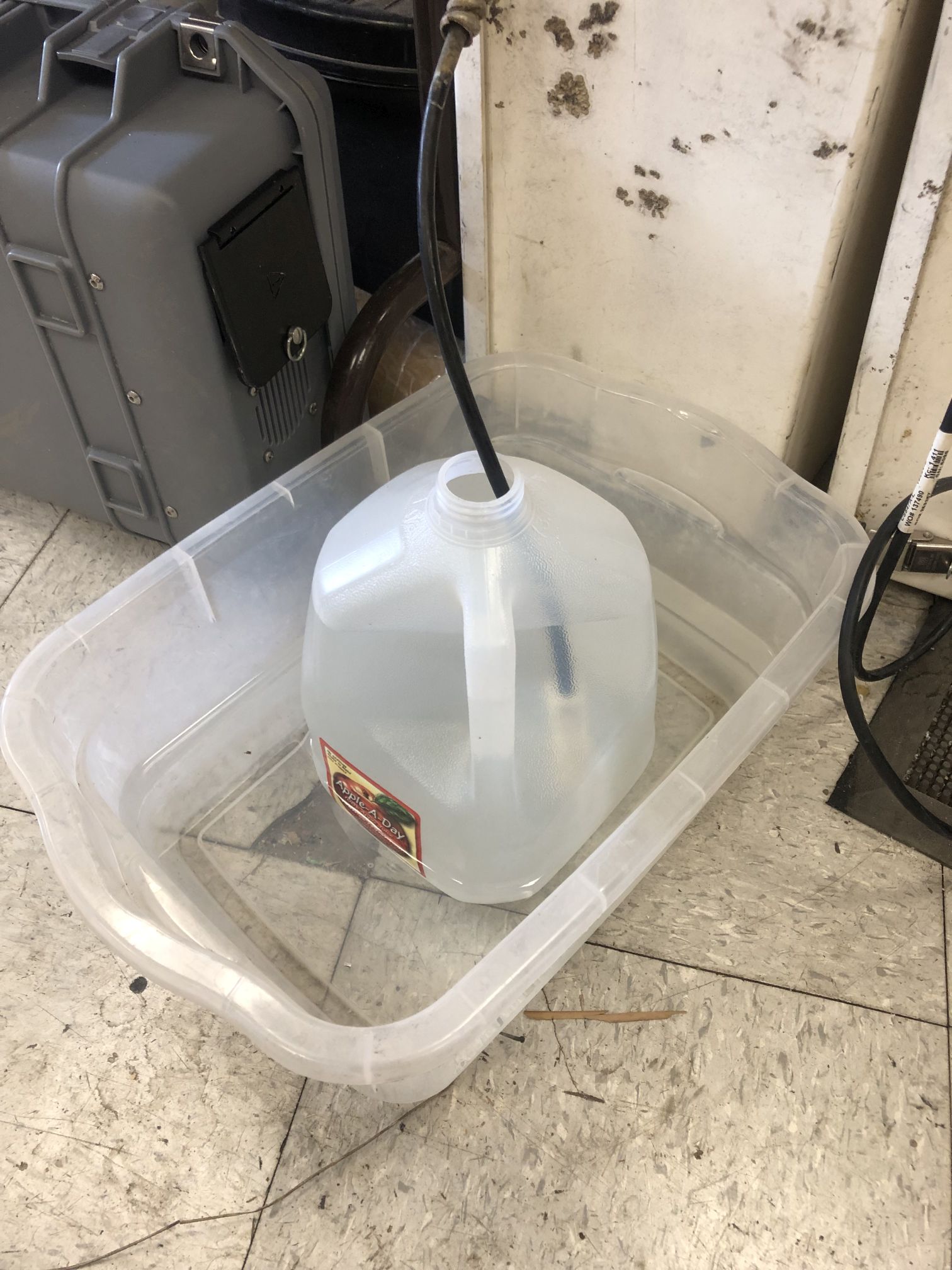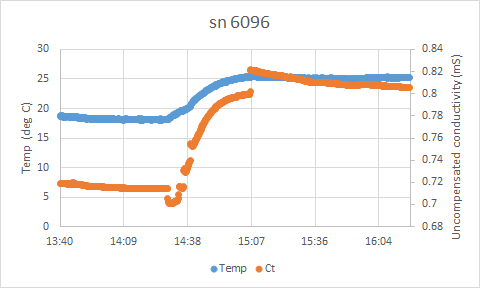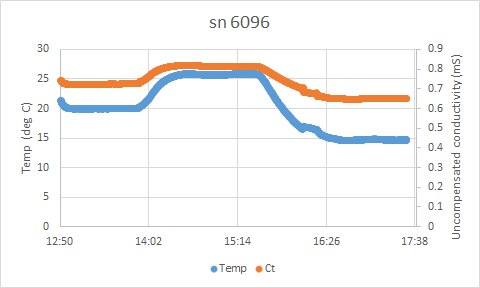Reports
Contents
| Title: | Conductivity CS547A TempCoef | |||||||||||||||||||||||||||||||||||||||||||
| Date: | 2024-02-14 - 2024-02-16 | |||||||||||||||||||||||||||||||||||||||||||
| Data File: | Lab_TempCoef_20240214.csv Lab_TempCoef_20240216.csv |
|||||||||||||||||||||||||||||||||||||||||||
| Refers to: | WP,6096 | |||||||||||||||||||||||||||||||||||||||||||
|
I've been cleaning up the Mayberry conductivity data for Kyle's investigation into declining methane fluxes at Mayberry. We've had three different CS547A conductivity sensors at Mayberry since 2011.
There are three sensor-specific parameters the datalogger uses to calculate temperature-compensated conductivity:
I spot-checked some of the Mayberry datalogger programs between 2011 and 2023 to check if these sensor-specific parameters were correct. The TempCoef for those programs were all 0.796 (the manual recommends TempCeof is 2%/degC for samples around 25 degC). We also used Kc for sn 5688 while sn 6097 was installed. I ended up re-calculating temperature-compensated conductivity in the Matlab met code. See the p-note for more details about the recalculation.
Temperature compensation We assume there is a linear relationship between temperature and conductivity. Since we are usually measuring conductivity at a temperature other than 25 degC, we want to convert our measurement to what it would be IF we had measured at 25 degC. The CS547A manual says, "The best corrections are made when the temperature coefficient is determined at a temperature near field conditions...If determining the temperature coefficient is not possible, use a value of 2% / °C as a rough estimate" Equation to calculate the temperature-compensated conductivity: Cond = (Ct × 100)/((Temp_C – 25) × TempCoef + 100) Cond: temperature-compensated conductivity (mS/cm) Ct: conductivity (not temperature compensated, mS/cm) Temp_C: temperature of solution (degC) TempCoef: temperature coefficient
Temperature coefficient from 2011 Back in 2011, Jaclyn Hatala derived a temperature coefficient using CS547A sn 5688, which was installed at Mayberry 6+ years between 2011 and 2020. She collected data at 25 degC and 20 degC and got a temperature coefficient of 0.786%/C. In the MB datalogger programs I spot-checked from 2011 to 2023, the conductivity calculation uses 0.796 as the temperature coefficient, which seems like a typo from 0.786.
Calculating a new temperature coefficient TempCoef = 100 * (Ct-C25)/((T-T25)*C25) = %/degC Ct: Uncompensated conductivity C25: Uncompensated conductivity at ~25C T: Temperature of Ct T25: Temperature of C25 (should be ~25C)
I removed CS547A sn 6096 from West Pond to test its TempCoef. In the lab, I wired it to a CR1000 and recorded temperature and uncompensated conductivity every 10 sec. I filled a gallon plastic jug with about 800ml DI water and maybe 100ml of expired conductivity standard (10,000uS). I set the plastic jug in a plastic tub filled partway with water. I put the sensor into the gallon jug and adjusted the plastic tub water temperature by either pouring in mugfuls of warm, microwaved water, or by placing ice packs in the tub. I let the sensor stabilize at 25, 20, 28, and 15 degC and got values 1.6-1.9 (see table below). These are close enough to the factory default TempCoef, 2, and I'm not sure how TempCoef differs between sensors. Summary: I decided it was most conservative to stick to the factory default TempCoef, 2, for re-calculating temperature-compensated conductivity from 2011-2023 at Mayberry.
Fig 1. Experimental setup with CS547A sn 6096 inside a mostly full plastic gallon jug. The jug is in plastic tub that is partially filled with water. I controlled the temperature of the water inside the jug by adjusting the temperature of the water in the tub.
Fig 2. Time series of temperature and uncompensated conductivity collected 2024-02-14
Fig 3. Time series of temperature and uncompensated conductivity collected 2024-02-16
Table 1. Temperature coefficients calculated from 3 test temperatures.
|
||||||||||||||||||||||||||||||||||||||||||||
| |




